This prefab cabin located in the snowy slopes of Sweden is a family’s winter home!
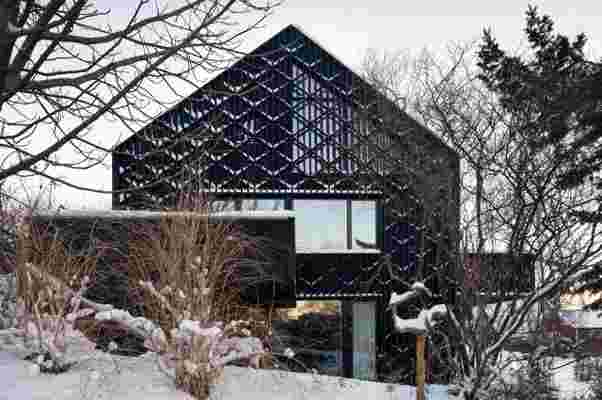
Villa Timmerman is a blackened timber cabin located in Sweden, designed by husband and wife duo Andreas Lyckefors and Josefine Wikholm.
Sweden-based architecture studio Bornstein Lyckefors recently finished work on an intricate winter getaway situated in the picturesque suburbs of Askim in Sweden’s Gothenburg Municipality. Devised and constructed by Bornstein Lyckefors founders and husband and wife team, Andreas Lyckefors and Josefine Wikholm, Villa Timmerman is a cozy winter prefabricated cabin, ideal for those winter months when you want to immerse your every sense in all the season has to offer.
Designer: Bornstein Lyckefors
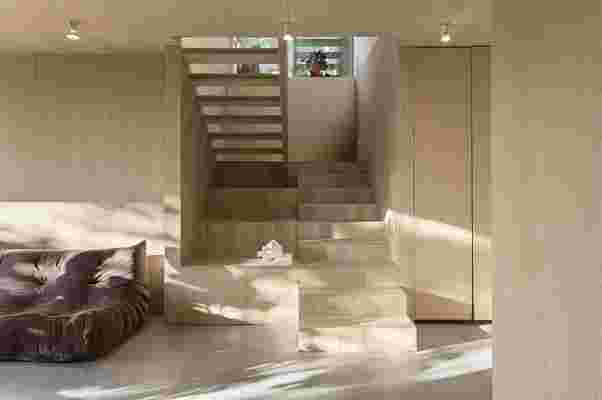
Askin is known as a commercial fishing hub, so it makes sense that Villa Timmerman’s location was chosen so that it would overlook the sea below. Located on the southeast side of a gradual slope, Villa Timmerman perches above snow-covered valleys as a semi-detached house that functions as the couple’s family base.
Defined by windows covered by over crossed grilles that form the shapes of diamonds and vertical beams, Villa Timmerman draws in ample sunlight from each side to create beautiful lattice shadows inside. The architects also note that “The grid was an experiment that proved to work well as extra protection against solar radiation on the façade and as a protective layer against the drifting rain on the west coast.”
The villa’s location was in fact chosen so that sun would enter the house from at least one side at all hours of the day so that extra protection was necessary. Explaining this further, the architects at Bornstein Lyckefors describe,
“It was a challenge to create a semi-detached house with equal qualities at both ends, as they naturally face different directions. We had to study the local conditions carefully and take into account weather, views, sun, evening sun, contact with the street and neighbors. In the end, the house could be arranged so that both parts of the house get morning, noon, and evening sun. There is always sun on one terrace or balcony during the bright part of the day.”
Achieved through a process called wood tarring, the villa’s blackened timber exterior complements the home’s interior, which is characterized by bright, natural wood walls. Inside, accents of veneers and ash elements give the staircase and furniture pieces some personality.
The brightening quality of the home’s interior is amplified by the open-plan layout and expansive windows that flow from the home’s floor to its double-height ceiling. Dissolving the barrier between the outdoors and the home’s warm interior, the villa, and its windows were specifically configured to maximize the amount of sunlight to enter the home during the day.
Top 10 Cabins of 2021!
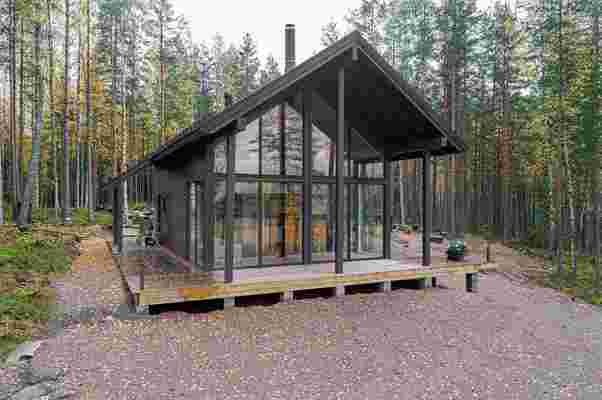
Cabins have been a relaxing and quintessential getaway option for everyone for ages galore. They’re the ultimate safe haven in the midst of nature, if you simply want to get away from your hectic city lives, and unwind. If you want a simple and minimal vacation, that lets you truly connect with nature, without any of the materialistic luxuries most of us have gotten accustomed to, then a cabin retreat is the answer for you! And, we’ve curated some beautiful and super comfortable cabins that’ll be the perfect travel destination for you. From a prefabricated cabin that balances a rustic personality with modern details to a tiny cabin with an asymmetrical roof – these mesmerizing and surreal cabins are the ultimate retreat, you’ve been searching for!
1. Iniö
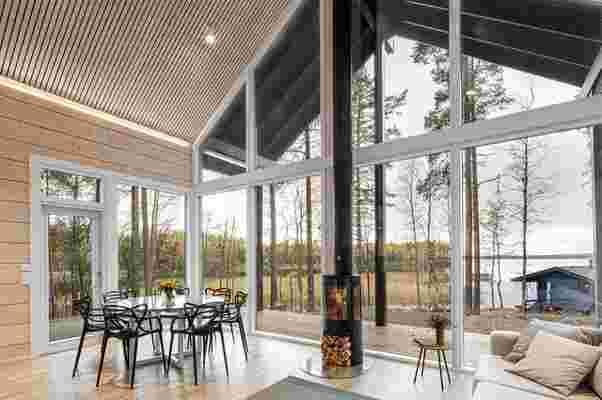
Iniö is a prefabricated log home from Pluspuu designed for a Switzerland-based Finnish couple who’d like a holiday retreat in their hometown of Heinola. Pluspuu currently keeps a catalog of twelve prefabricated log houses. Out of the twelve, the couple settled on Iniö for its rustic personality that’s interwoven with distinct modern touches like expansive floor-to-ceiling windows and a bright, unstained wooden interior. Iniö comes as a two-level, three-bedroom log house stationed behind lofty eaves that create plenty of overhang for the home’s wraparound patio.
2. Hüga
Developed from the Danish word Hyggee, Hüga was conceptualized, designed, and built over a span of 24 months, during which Grandio’s team of designers were able to produce a 45 m2 residence with space for a bedroom, living room, bathroom, kitchen, and dining area. The final results are these hüga units that are built with reinforced concrete and designed for minimal maintenance as well as reducing your energy costs. These compact homes can withstand all climates and adverse conditions, including earthquakes, wildfires, and hurricanes. Hüga homes are also mobile and modular so much so that you can extend your house in plan in just one day. Weighing about 55-Tn, Hüga requires a team and machinery for transportation but can be placed according to the prospective resident’s preference.
3. System 00
Backcountry Hut Company released a collection of DIY A-frame cabin kits that allows buyers to build their own cabins without construction permits and little to no heavy machinery. Each cabin ‘system,’ comes prefabricated in a flat-pack layout that can be assembled either by amateur or professional builders depending on the model. System 00 is described as Backcountry’s “essentialist A-frame shelter.” Stocked with only the essentials, System 00 measures 10’x10’ and was designed to welcome living spaces such as a single bedroom with room for one sleeping bunk, a meditation studio for yoga, or an open space for working on art.
4. Russel and Leah’s Tiny Home
In New Zealand, the views are aplenty. No matter where your gaze goes, different views of sloping, grassy hillsides, golden hour sunsets, and towering trees seem to follow. For Russel and Leah, their tiny home was designed especially to bring the outdoors and all of its wonder inside. “Almost every wall,” Leah describes, “has got a window or a door and that, of course, makes the house feel bigger, bringing the outdoors in and keeping the house cool during the summer.” While many tiny house builders coat their home’s interior walls in white paint to enlargen the living space, the windows that punctuate almost every wall in Russel and Leah’s house provide an open-air feel and allow room for moodier interior design elements.
5. The Luna
Defined by an asymmetrical roofline, The Luna embraces a geometric, angular profile to complement the natural ruggedness of snow-covered plots of land. Combining rustic energy with modern design, The Luna is clad in matte black, 100-year corrugated steel for a lived-in, yet contemporary look. New Frontier decided against filling up The Luna’s lengthier facades with windows, opting instead for a sweeping, floor-to-ceiling window wall on one end.
6. Road-Haus
Road-Haus is a 250sqf tiny cabin scaled down from a larger model designed by Wheelhaus, a tiny home company committed to modular and eco-friendly design practices. Taking the best from the more spacious Wedge model, the Road-Haus fuses elegant design elements with tiny living essentials. Considered crowd favorites by the tiny home company, Wheelhaus adorned Road-Haus with the same pitched roofline and wrap-around clerestory windows found on the Wedge model. From the bottom to the top, Road-Haus residents are immersed in the glory of the woods, with timber flooring that’s mirrored on the tiny home’s ceiling.
7. Cabin in Maine
Situated in a quiet and private location, this little cabin in the woods of Maine is as peaceful as it gets. The pond is quite secluded, hence it is free of noisy motorboats and pesky tourists. The height of the floating home provides unparalleled views of the pond and forest and also helps in capturing the breeze. Floor-to-ceiling windows and doors adorn the entire home, hence creating a beautifully open space, that perfectly captures the sunlight in the morning and late afternoon! Peck wanted to create “an experience within a space—keeping us connected to nature and the feelings of this site.”
8. Grand Pic-Chalet
Measuring 1464sqf, Grand-Pic Chalet certainly is grand, yet still unassuming amidst the surrounding birch trees. Taking note of the wooded area’s flora and saplings, the architects at Appareil let the trees and forest guide their design process. Inspired by the lanky birch trees around Grand-Pic Chalet, Appareil architects clad the cottage in corrugated steel to complement the organic vertical lines found throughout the forest. Cloaked by lush black facades, come dusk the Grand-Pic Chalet disappears into the dark like a rider in the night.
9. Minima
Minima is a 215-square-foot (20-square-meter) prefab module designed to be a flexible structure to serve as a standalone tiny home or as an additional unit in the backyard that can be used as a home office or spacious guest house. It is constructed with CLT (cross-laminated timber) which is a sustainable material and cuts down on the carbon emissions that concrete produces. The modern micro-home is giving me major Japandi vibes! The boxy exterior is clad with a skin of cypress battens and a steel roof which maintains its minimal look. The unit has a streamlined, modern profile that still feels warm and human-centric. The facade opens up with hardwood-framed glass doors that can slide over to reveal its Scandinavian and Japandi-inspired interior.
10. Ela
Ela , a tiny home currently available for booking on Airbnb, is one of two shipping containers turned cabins designed by Bethany Hershberger that sits in the forested clearing of Walnut Creek, Ohio. Arriving at the tiny home, guests descend a long timber staircase that brings them to the forest floor where Ela is located. Situated on a slight incline, Ela emerges from the trees on an exposed wooden foundation that carries the shipping container and outdoor leisure area. Accessible via a folding loft step ladder, the outdoor living area features a lounging area with plenty of chairs, a natural gas fire pit, an outdoor shower, and a tub. From the shower to the deck chairs, Ela finds warmth in natural wooden accents and textured glass elements to create a private, yet intimate leisure area.
This AI-enabled tiny home is the perfect budget-friendly prefab house for the urban city life!
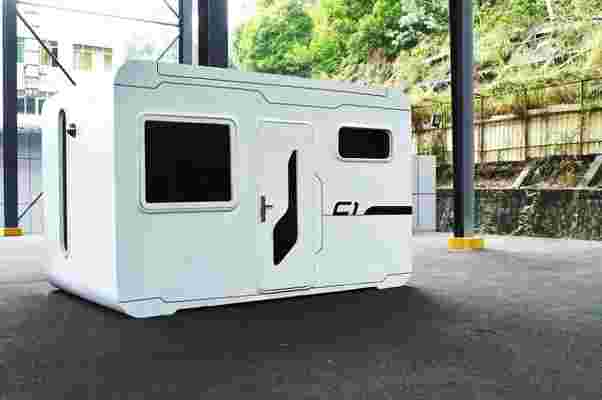
Low-cost, prefabricated , and ready to live in homes are all the rage right now! And tiny home builder Nestron has jumped on the bandwagon with their latest AI-enabled home ‘Cube One’. Cube One is a 156 square foot home perfect for all kinds of residents – from single youngsters to large families. The value for money home has been equipped with built-in furnishings, voice-controlled tech, and a galvanized steel shell that not only lends it a sci-fi feel but also protects it from extreme temperatures and natural disasters. Starting at $30,000, the Cube One can be shipped to any location in the world, and will be ready for you to move into from the moment it arrives!
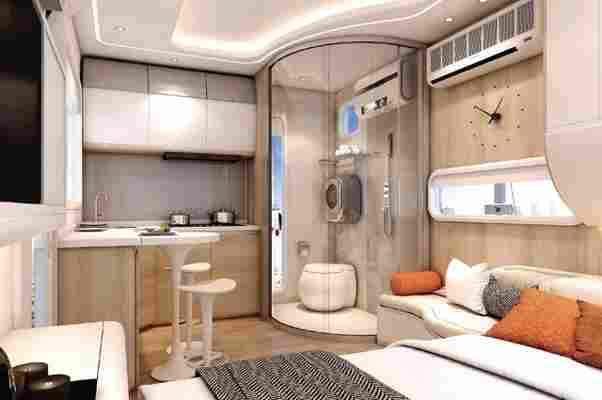
Much like a Rubik’s Cube, the dynamic Cube One can be customized and played around with! The interior can be customized with various add-ons and trimmings, including a kitchen with a bar counter, a wardrobe, a bed, a living area, and a shower accompanied by a toilet and laundry machine. It also comes fully equipped with smart technology which is experienced in the form of color controllable LED lighting, a television, sound system, and air conditioning.
At an extra cost, you can integrate a compostable toilet, solar panels, and electric-heated flooring within the home, for an eco-friendly touch to the house! In fact, 90% of the materials used to build Cube One are recyclable, and compared to conventional construction methods, it requires 99% less water to construct. Rock wool insulation, nontoxic in nature, was used to pad the interiors of the home, protecting it from excessive noise and extreme temperatures. Drop-lock flooring and compressed wood panels were used to make the home resistant to humidity and moisture.
Cube One is a durable and portable prefab home that not only manages to rate high on sustainability but also reminds me of a spaceship’s cabin! Futuristic, sleek, and smart, Cube One is the future of tiny prefab homes!
Designer: Nestron
Your comment